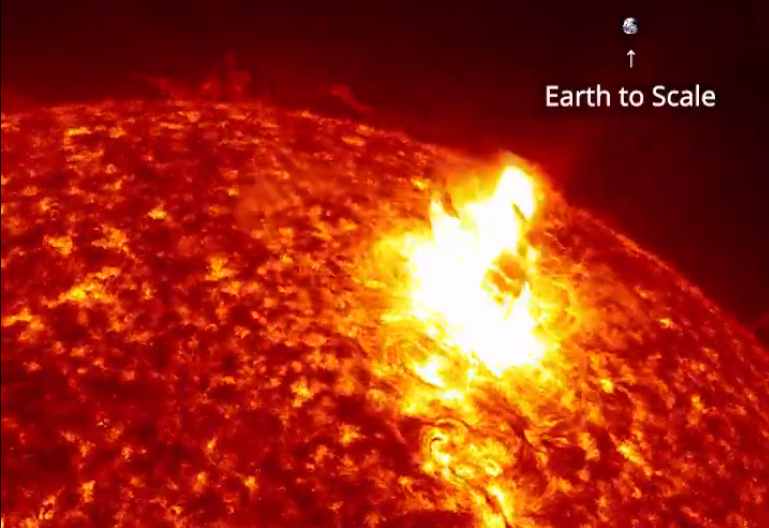The surface of the Sun like you’ve never seen before. Watch the coronal mass ejection as it erupted near the surface of the sun and ripple through our solar system

The Sun is the star at the center of the Solar System. Our lonely planet orbits the Sun at an average distance of 149.60 million km (92.96 million mi), and one complete orbit takes 365.256 days. The temperature of the Sun at its core is 27 million degrees and 10 million degrees on its surface. With this high temperature, scientists have not been able to capture the surface of the Sun up close until recently.
Every so often, the sun erupted, and releases a significant amount of plasma and accompanying magnetic field with the power of 20 million nuclear bombs from the sun’s corona. These expulsions are known as coronal mass ejections or CMEs. These eruptions send over a billion tons of matter flying through space impacting any planets or spacecraft in its path and send shocks ripple through the solar system, which ultimately may interrupt satellites and power grids on Earth. When the sun is most active, the CMEs non can happen several times a day. However, during its quieter periods, CMEs occur only about once every five days.
In 2011, NASA’s SDO spacecraft captured the Sun’s massive solar eruption with a timelapse that covers approximately four hours and was captured at a wavelength of 304 angstroms. In the video below, the Sun unleashed an M-2 (medium-sized) solar flare with a spectacular coronal mass ejection (CME). The large cloud of particles mushroomed up and fell back down looking as if it covered an area almost half the solar surface.
SDO observed the flare’s peak at 1:41 AM ET. SDO recorded these images in extreme ultraviolet light that show a very large eruption of cool gas. It is somewhat unique because at many places in the eruption there seems to be even cooler material — at temperatures less than 80,000 K.
This video uses the full-resolution 4096 x 4096-pixel images at a one-minute time cadence to provide the highest quality, finest detail version possible. It is interesting to compare the event in different wavelengths because they each see different temperatures of plasma.
Below is an actual (longer version) of the video from NASA. You can see a shorter version below.
Below is a shorter version of the video. Hats off to the Wonder of Science for sharing this on Twitter.
The Sun unleashes a spectacular solar flare and coronal mass ejection, launching a massive cloud of particles that mushrooms out and falls back down to the surface. Captured by NASA's SDO spacecraft. Credit: NASA/GSFC pic.twitter.com/sLwWljnUdc
— Wonder of Science (@wonderofscience) December 7, 2020




